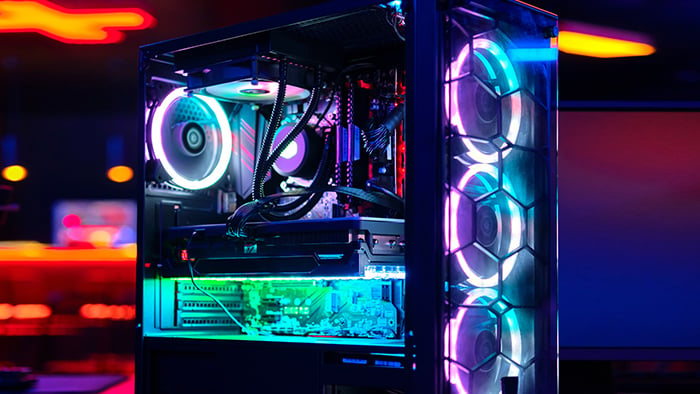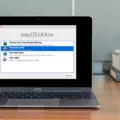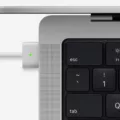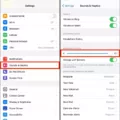Graphics Processing Units (GPUs) are essential components of modern computers that handle complex graphical tasks such as gaming, video editing, and 3D modeling. The fans on a GPU are designed to keep the card cool, but they can produce an annoying ticking noise that can be distracting when you’re trying to work or play. In this article, we will explore the causes of ticking noises in GPU fans and provide some solutions to help you quiet them down.
The most common cause of ticking noises in GPU fans is a loose blade or loose blade holder screws. Over time, these screws can become loose due to vibration or wear and tear. You can check for loose screws by removing the fan shroud and inspecting the fan blades and blade holders. If you find any loose screws, tighten them using a screwdriver. This should fix the noise issue.
Another cause of ticking noises in GPU fans is a build-up of dust and debris on the fan blades. This can cause the fan to become unbalanced and produce a ticking noise. To fix this issue, you can remove the fan shroud and clean the fan blades using compressed air or a soft-bristled brush. This will help to remove any dust or debris that may be causing the fan to produce a ticking noise.
If the above solutions do not work, it may be necessary to replace the fan on your GPU. This can be a more complex solution, but it will ensure that the ticking noise is completely eliminated. You can purchase replacement fans online or at your local computer store. Just make sure to get the correct fan for your GPU model.
In some cases, the GPU itself may be producing the ticking noise. This can happen if the thermal paste on the GPU chip has dried out or become inadequate. This can cause the GPU to run hot, which can cause the fans to spin faster and produce a ticking noise. To fix this issue, you can replace the thermal paste on the GPU chip. This will help to ensure that the GPU runs cooler and quieter.
Ticking noises in GPU fans can be annoying and distracting. However, there are several solutions that you can try to quiet them down. By checking for loose screws, cleaning the fan blades, and replacing the fan or thermal paste if necessary, you can eliminate ticking noises and enjoy a quieter computing experience.

Investigating the Cause of a Clicking Noise from a Fan
The most common reason for a clicking noise in a fan is due to a loose blade and/or loose blade holder screws. The screws that hold the blades in place may become loose over time, causing the blades to wobble or vibrate, resulting in a clicking sound. To resolve this issue, it is recommended to check all the screws and tighten them as needed. By doing so, the blades will be securely held in place, and the clicking noise should disappear. Additionally, it is essential to ensure that the fan is cleaned regularly, as dirt or debris can also cause unwanted sounds. If the clicking noise persists, it may be necessary to seek the assistance of a professional technician or replace the fan altogether.
Noisy GPU Fan: Causes and Solutions
The GPU fan makes noise when it runs at a high speed to cool down the graphics card. This could be due to several reasons such as:
1. Overheating: When the GPU temperature rises above a certain threshold, the fan speeds up to dissipate the heat. This can cause the fan to make a loud noise.
2. Dust and debris: Over time, dust and debris can accumulate on the fan blades, causing them to become unbalanced and create noise.
3. Fan bearing failure: If the fan bearings wear out, it can cause the fan to make a grinding or whining noise.
4. Fan speed setting: Sometimes, the fan speed setting may be set too high in the BIOS or graphics card software, causing the fan to run at a high speed and create noise unnecessarily.
To address the issue, you can try the following solutions:
– Clean the fan and heatsink to remove any dust or debris that may be causing the noise.
– Adjust the fan speed setting in the graphics card software or BIOS to a lower speed if the noise is due to the fan running too fast.
– Replace the fan if it has failed due to bearing wear or damage.
– Ensure that your GPU is not overheating by checking the temperature and adjusting the fan speed or adding additional cooling if necessary.
In some cases, replacing the thermal paste on the GPU can also help reduce the temperature and noise levels.
Reducing GPU Fan Noise
If you find your GPU fan to be making noise, there are several ways to address this issue. Here are five ways to stop your GPU fan from making noise:
1. Reduce the fan speed: One of the most straightforward ways of reducing noise from your GPU fan is to reduce the fan speed. You can do this by using software such as MSI Afterburner or EVGA Precision X1, which allows you to set a custom fan curve that lowers the fan speed when the GPU temperature is low.
2. Remove the dust from the heatsink: When the heatsink gets clogged with dust, it causes the fan to work harder and make more noise. To remove the dust, you can use compressed air or a small brush to clean the heatsink thoroughly.
3. Downclock your GPU: Running your GPU at a lower clock speed can help reduce the temperature, which in turn reduces the load on the fan. However, downclocking your GPU can also reduce its performance, so it’s important to find the right balance between performance and noise reduction.
4. Isolate the fan from its mount: If the noise is caused by the fan vibrating against its mount, you can try isolating the fan from the mount using rubber or silicone dampeners. This will help reduce the noise caused by the vibration.
5. Soundproof your PC case and use custom fans: If none of the above methods work, you can try soundproofing your PC case using foam padding or acoustic panels. Additionally, you can replace the stock fans with custom fans that are designed to be quieter, such as Noctua or Be Quiet! fans.
By implementing one or more of these methods, you should be able to reduce the noise from your GPU fan and enjoy a quieter computing experience.
Should GPU Fans Run Constantly?
GPU fans are not required to run all the time. The fans on a graphics card are designed to start spinning when the GPU temperature reaches a certain point. Until that point is reached, the fans will remain still. This is because the heatsink on the graphics card is designed to dissipate heat from the GPU without the need for fans.
If you are not running any demanding applications or games, the GPU usage will be low and the GPU temperature will be low as well. In such a scenario, the fans will not spin. However, if you start running a demanding game or application, the GPU temperature will rise and the fans will start spinning to provide additional cooling.
It is worth noting that some graphics cards have a default fan curve that determines the fan speed based on the GPU temperature. This means that the fan speed will increase as the GPU temperature goes up. However, you can usually adjust the fan curve settings in your graphics card’s software to customize when the fans start spinning and at what speed.
GPU fans do not need to run all the time. They will only start spinning when the GPU temperature reaches a certain point, which typically occurs during heavy usage such as gaming or running demanding applications.
Conclusion
A ticking noise coming from your GPU fan can be a cause for concern, as it may indicate a loose blade or screws. However, there are several solutions available to address this issue, such as tightening the screws, replacing the thermal paste, reducing the fan speed, removing dust from the heatsink, downclocking the GPU, or soundproofing the PC case and custom fans. It is important to address the issue promptly to prevent any further damage to your GPU and ensure optimal performance. By taking the necessary steps, you can effectively reduce the noise and enjoy a quieter computing experience.








